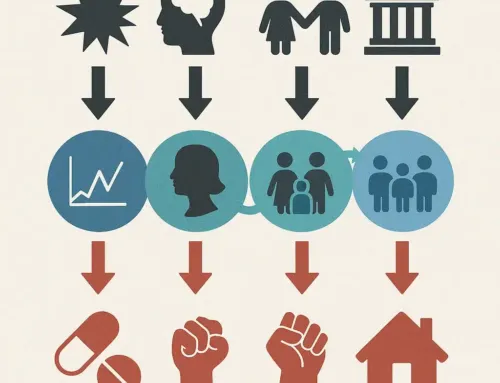
Approx. read time: 5.6 min.
Post: Importance of Cardio, Strength, and Stability for All Ages
Importance of cardio, strength and stability for all ages essential for overall health and well-being at every stage of life. Three fundamental components of a well-rounded fitness regimen are cardiovascular exercise, strength training, and stability exercises. Each of these elements plays a crucial role in promoting a healthy body and mind, and their importance varies slightly across different age groups. This article delves into why cardio, strength, and stability are vital for everyone, from children to older adults, with examples to illustrate their benefits.
Cardiovascular Exercise
Cardiovascular exercise, commonly known as cardio, includes activities that raise the heart rate and improve the efficiency of the cardiovascular system. Examples of cardio exercises include running, cycling, swimming, and brisk walking.
Children and Adolescents: For children and adolescents, cardio helps in the development of a strong heart and lungs. It also aids in the prevention of childhood obesity, a growing concern worldwide. Engaging in sports like soccer, basketball, or simply playing tag can be excellent ways for young individuals to incorporate cardio into their daily routines. These activities not only improve physical health but also contribute to social skills and teamwork.
Adults: In adults, regular cardio exercises are crucial for maintaining a healthy weight, reducing the risk of chronic diseases such as heart disease, diabetes, and hypertension. For instance, adults can benefit greatly from jogging or attending group fitness classes like Zumba or spinning. These activities help to manage stress levels, enhance mood, and improve overall mental health.
Older Adults: For older adults, cardio exercises are essential for maintaining mobility and independence. Activities such as walking, swimming, and low-impact aerobics can help reduce the risk of falls, which is a significant concern in this age group. Additionally, regular cardio exercise can help manage arthritis pain and improve cognitive function, helping to keep the mind sharp as one ages.
Strength Training- Importance of cardio, strength and stability for all ages
Strength training involves exercises designed to improve muscle mass, strength, and endurance. Common methods include weight lifting, resistance band exercises, and body-weight exercises like push-ups and squats.
Children and Adolescents: While intense weightlifting is not recommended for very young children, incorporating light strength exercises can help in the development of strong bones and muscles. Activities such as climbing, gymnastics, and body-weight exercises like push-ups and squats can be both fun and beneficial. These exercises help in building a foundation of strength that can support overall physical development and athletic performance.
Adults: For adults, strength training is critical for maintaining muscle mass, which naturally declines with age. Exercises such as lifting weights, resistance band workouts, and body-weight exercises can help counteract this decline. Strength training also supports metabolic health by increasing muscle mass, which in turn can help manage weight and reduce the risk of metabolic diseases. Furthermore, it enhances functional fitness, making everyday activities like lifting groceries or climbing stairs easier.
Older Adults: In older adults, strength training is vital for preserving muscle mass and bone density, which are essential for maintaining mobility and preventing falls. Simple exercises using light weights or resistance bands can make a significant difference. For example, leg lifts, seated bicep curls, and wall push-ups can be effective and safe for older individuals. Maintaining strength can greatly enhance the quality of life by enabling older adults to remain independent and active.
Stability Exercises- Importance of cardio, strength and stability for all ages
Stability exercises, also known as balance exercises, focus on strengthening the muscles that keep you upright, including the core muscles. Activities that improve balance include yoga, Pilates, tai chi, and specific stability exercises like standing on one leg.
Children and Adolescents: In children and adolescents, stability exercises are crucial for developing coordination and preventing injuries. Activities like balance beam exercises, yoga, and martial arts can enhance stability and proprioception (the sense of self-movement and body position). These exercises are particularly beneficial for young athletes, helping them perform better in sports and reduce the risk of injuries.
Adults: For adults, stability exercises play a key role in enhancing core strength and preventing injuries. Strong core muscles are essential for good posture and reducing back pain. Exercises such as planks, yoga, and Pilates can be incorporated into regular workout routines. Stability exercises also help in performing daily activities more efficiently and can improve overall athletic performance.
Older Adults: In older adults, stability exercises are critical for reducing the risk of falls, which can lead to serious injuries such as hip fractures. Simple balance exercises like standing on one leg, heel-to-toe walking, and chair yoga can be very effective. These exercises improve balance, coordination, and core strength, contributing to better overall stability and mobility. Additionally, practices like tai chi have been shown to significantly enhance balance and reduce fall risk in older populations.
Cardiovascular exercise, strength training, and stability exercises are indispensable components of a comprehensive fitness regimen at any age. From promoting healthy growth in children to maintaining mobility and independence in older adults, these exercises offer myriad benefits that enhance overall health and quality of life.
For Children and Adolescents:
Cardio: Engage in sports and active play for heart health and social development. Strength: Utilize body-weight exercises and playful activities to develop muscles. Stability: Incorporate balance beam and yoga for better coordination and injury prevention.
For Adults:
Cardio: Participate in running and group classes for weight management and mental health. Strength: Focus on weight lifting and resistance bands to maintain muscle and boost metabolism. Stability: Practice yoga and Pilates for core strength and to prevent injuries.
For Older Adults:
Cardio: Choose walking and swimming to enhance mobility and cognitive health. Strength: Use light weights and resistance bands for muscle and bone health. Stability: Perform simple balance exercises and tai chi to prevent falls and improve mobility.
Incorporating these exercises into daily routines can help individuals of all ages lead healthier, more active lives, and mitigate the risks associated with physical inactivity. Whether you are a young child or an older adult, making time for cardio, strength, and stability exercises is a wise investment in your health and well-being.
206 – Exercising for longevity: strength, stability, zone 2, zone 5, and more | Peter Attia, M.D.
The BEST single exercise to improve BALANCE for seniors
Peter Attia on The Best Exercises for Longevity
Related Videos:
Related Posts:
Strategic Acquisition Analysis: Identifying the Optimal Buyout Target for Magna International
From Teen Dreams to Adult Realities: A Humorous Leap Through Time
Resilience Amidst Recovery: Navigating Life’s Challenges Together
Step Up Your Game: The Ultimate Guide to Choosing the Best Exercise Shoes
Understanding the Relationship Between High Protein Diets and Kidney Disease









